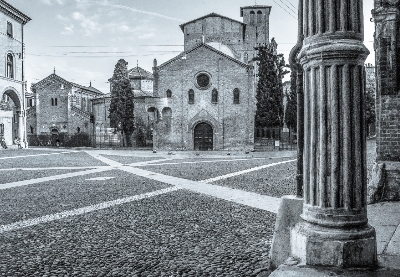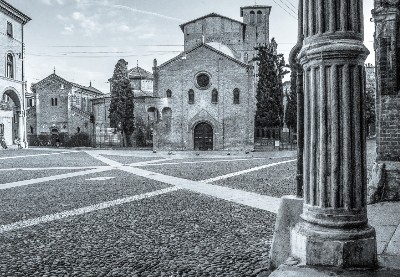The church of Santo Stefano – known as the seven churches – is one of the most famous and visited of the city, but it is likely that not everyone knows that this building is at the center of an area that is a real indication of the sacred places of Jerusalem, born to reproduce and celebrate the main points of the Passion in Bologna: with this intention the Sancta Jerusalem Bononiensis was born, which develops starting from the fascinating square that opens along Via Santo Stefano right in front of the basilica.
The idea is attributed to San Petronio, who built the original church (Santo Sepolcro) during his bishopric in Bologna in the 5th century. In fact, after completing the pilgrimage to the Holy Land, Petronius wanted to reproduce an itinerary that could give the Bolognese the opportunity to walk the stages of the Calvary of Christ without having to face the long and dangerous journey to Jerusalem.
The intent was certainly not to avoid the pilgrimage, which remained the only possibility of expiation and testimony of faith, according to the sentiment of those times, but instead wanted to create a sort of votive Jerusalem thousands of miles away from the real place .
Here then that through vicolo Gerusalemme (lateral of Strada Maggiore) we arrive to the church that until a few years ago also housed the remains of Petronius, called precisely Holy Sepulcher, and later commonly known still in the fourteenth century with the name of Holy Jerusalem, in fact.
Continuing further, crossing Via Santo Stefano – so called in homage to the first Christian martyr – we start along the ascent of San Giovanni in Monte, where before the present church there was a small chapel recalling the Temple of the Abstraction of Jesus on the Mount of Olives in Jerusalem, where according to the Gospel tradition Gethsemane rose, the place where Jesus retired before his ordeal and his earthly end.
With the passing of the centuries, as the original complex wanted by Petronio was integrated with other buildings until it became the seven churches, the popular memory of this Holy Land in Bologna was also lost, but it is still present in the toponymy of some ways: to remember an era and a way of thinking that have contributed a lot to making the greatness of our city.






